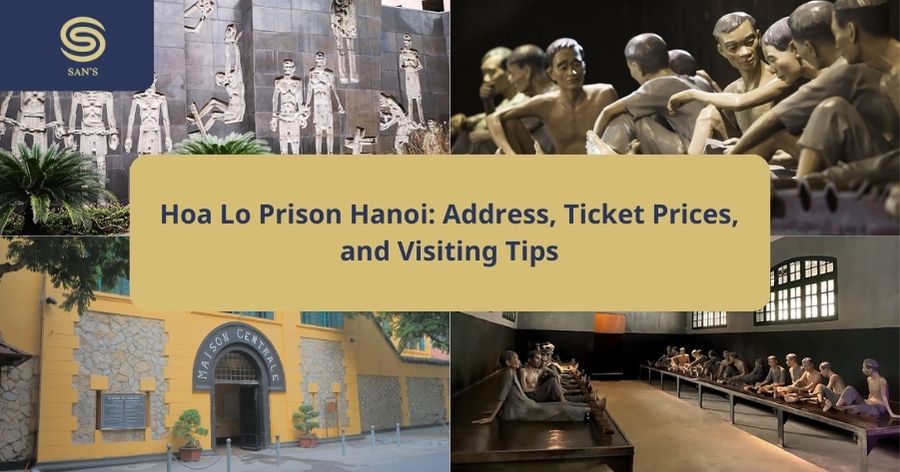Vietnam, with its stunning landscapes, rich culture, and vibrant cities, is a dream destination for many travelers. From the bustling streets of Hanoi to the serene beaches of Phu Quoc, Vietnam offers a diverse range of experiences that cater to all types of tourists.
One of the unique aspects of Vietnam is its diverse climate, which varies significantly from north to south. This diversity means that there’s always a good time to visit some part of the country, no matter when you plan your trip.
In this article, we’ll guide you through the best time to visit Vietnam, considering the different climate zones and seasonal variations. This way, you can plan your trip to maximize your enjoyment and avoid any weather-related inconveniences.
Understanding Vietnam’s Climate
Overview of Vietnam’s Climate Zones
Vietnam is divided into three main climate zones: North Vietnam, Central Vietnam, and South Vietnam. Each zone has its unique weather patterns and best times for visiting.
North Vietnam
In North Vietnam, you’ll experience four distinct seasons. Winters (December to February) can be quite cold, especially in the mountainous areas like Sapa, while summers (June to August) are hot and humid.

Central Vietnam
Central Vietnam, including cities like Hue, Danang, and Hoi An, has a more tropical climate with a dry season from February to August and a rainy season from September to January.

South Vietnam
South Vietnam, home to Ho Chi Minh City and the Mekong Delta, enjoys a tropical climate with two main seasons: the dry season from December to April and the wet season from May to November.

Seasonal Variations
Spring (March to May)
Spring is generally a pleasant time to visit Vietnam, with moderate temperatures and blooming flowers. It’s a great season for outdoor activities and exploring the countryside.

Summer (June to August)
Summer in Vietnam can be hot and humid, especially in the north and south. However, it’s the perfect time for beach activities and island hopping in Central Vietnam.

Autumn (September to November)
Autumn is another excellent time to visit, with cooler temperatures and less rain, particularly in the north and south. It’s ideal for city exploration and cultural festivals.

Winter (December to February)
Winter in Vietnam varies greatly by region. The north can be quite chilly, while the south remains warm and sunny. It’s a great time for enjoying the beaches in the south.

The Best Time to Visit Different Regions in Vietnam
North Vietnam
Best Months: October to December, March to May
These months offer mild temperatures and clear skies, making it perfect for exploring Hanoi, trekking in Sapa, and cruising in Halong Bay.
Highlights: Hanoi, Sapa, Halong Bay
- Hanoi: Enjoy the capital’s rich history and vibrant street life.
- Sapa: Trek through the stunning terraced rice fields.
- Halong Bay: Take a cruise through this UNESCO World Heritage Site.

Central Vietnam
Best Months: February to August
This period sees little rain and plenty of sunshine, ideal for visiting the historic city of Hue, the beach town of Danang, and the ancient town of Hoi An.
Highlights: Hue, Danang, Hoi An
- Hue: Explore the Imperial City and royal tombs.
- Danang: Relax on beautiful beaches and visit the Marble Mountains.
- Hoi An: Wander through charming ancient streets and enjoy the local cuisine.

South Vietnam
Best Months: December to April
These months are part of the dry season, ensuring sunny days and pleasant weather, perfect for exploring Ho Chi Minh City, the Mekong Delta, and Phu Quoc island.
Highlights: Ho Chi Minh City, Mekong Delta, Phu Quoc
- Ho Chi Minh City: Discover the bustling city life and historical landmarks.
- Mekong Delta: Experience the vibrant river life and floating markets.
- Phu Quoc: Relax on pristine beaches and explore the island’s natural beauty.

Activities and Events by Season
Spring
- Flower festivals: Enjoy the vibrant displays of flowers in various cities.
- Trekking in Sapa: Ideal weather for exploring the mountainous regions.
Summer
- Beach activities: Perfect time for sunbathing and water sports.
- Island hopping: Visit the beautiful islands off the coast of Central Vietnam.
Autumn
- Exploring cities: Cooler temperatures make city tours more comfortable.
- Cultural festivals: Participate in local festivals and learn about Vietnamese traditions.
Winter
- Cruises in Halong Bay: Enjoy the stunning landscapes with fewer crowds.
- Exploring southern beaches: Take advantage of the warm weather in the south.
Weather Considerations
Monsoon Season
- Timing and impact in each region: The monsoon season varies, with the north experiencing it from May to September, the central region from September to December, and the south from May to November.
- Tips for traveling during monsoon: Plan indoor activities, carry rain gear, and be flexible with your itinerary.
Typhoon Season
- Timing and regions affected: Typhoons mostly affect Central and Northern Vietnam from June to November.
- Safety tips and alternative plans: Monitor weather forecasts, have a backup plan, and consider travel insurance.
Festivals and Cultural Events
Tet Holiday (Lunar New Year)
- When it occurs: Typically in late January or early February.
- Cultural significance and what to expect: Experience Vietnam’s most important festival with traditional celebrations, family gatherings, and vibrant markets.

Mid-Autumn Festival
- Highlights and activities: Enjoy lantern parades, lion dances, and mooncakes in September or October.

Other Local Festivals
- Regional festivals and events worth attending: Explore unique local festivals that showcase Vietnam’s rich cultural heritage.
Travel Tips for Different Seasons
Packing Essentials
- Seasonal clothing and gear: Pack accordingly to the season you’re visiting; light clothes for summer, warm layers for winter, and rain gear for the monsoon.
Accommodation Booking
- Best time to book hotels and flights: Book well in advance during peak seasons and major festivals to secure the best rates and availability. You can also consider booking a room at the Sanhotel Series system to receive the best price and service quality.
Local Customs and Etiquette
- Cultural norms to be aware of during different seasons: Respect local customs, dress modestly when visiting religious sites, and be mindful of local holiday schedules.
Conclusion
Summary of the Best Times to Visit Each Region in Vietnam
To make the most of your visit to Vietnam, plan your trip according to the region and season. The best time to visit North Vietnam is from October to December and March to May, Central Vietnam from February to August, and South Vietnam from December to April.
Encouragement to Plan Ahead and Make the Most of the Visit
With proper planning and timing, you can enjoy Vietnam’s diverse attractions and cultural experiences to the fullest.
Start Planning Your Trip to Vietnam Now!
Don’t wait any longer—start planning your trip to Vietnam now and discover the beauty and charm of this incredible country.
FAQs
When is the Cheapest Time to Visit Vietnam?
The cheapest time to visit Vietnam is during the low season, from May to September, excluding the typhoon-prone months. This period offers lower prices on flights and accommodation.
Is It Safe to Visit Vietnam During the Monsoon Season?
Yes, it is safe to visit Vietnam during the monsoon season with proper planning. Be prepared for rain, plan indoor activities, and stay updated on weather forecasts.
What Should I Pack for a Trip to Vietnam in Different Seasons?
Pack light, breathable clothes for summer, warm layers for winter in the north, and rain gear for the monsoon season. Don’t forget sunscreen and insect repellent.
Are There Any Special Events That Tourists Should Not Miss?
Tourists should not miss Tet Holiday (Lunar New Year) for its cultural significance and celebrations, as well as the Mid-Autumn Festival for its vibrant lantern displays and traditional activities.
How Far in Advance Should I Book My Trip to Vietnam?
For the best rates and availability, especially during peak seasons and major festivals, book your flights and accommodation at least 3-6 months in advance.





